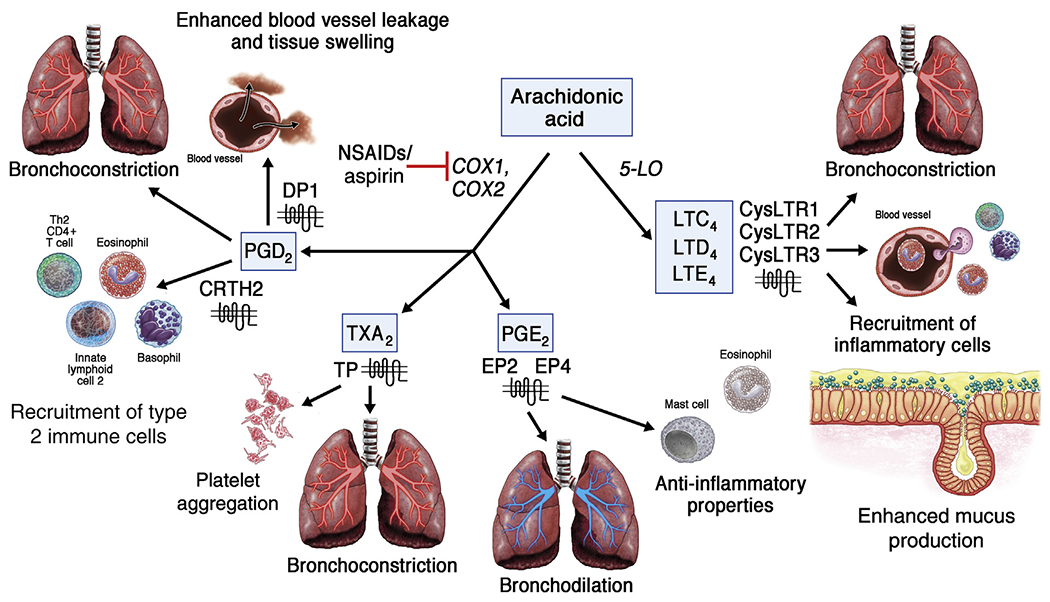FIG 2.

Arachidonic acid metabolism is dysregulated in AERD. Compared with aspirin-tolerant patients, patients with AERD at baseline have elevated levels of CysLTs (LTC4, LTD4, LTE4) and PGD2 that mediate bronchospasm, vascular leak, inflammatory cell recruitment, and enhanced mucus production. In contrast, levels of PGE2, which has anti-inflammatory properties and can induce bronchodilation, are reduced in patients with AERD. Although the precise mechanism of benefit from aspirin therapy is unclear, the effects of PGD2 and CysLTs are dominant components. During an aspirin desensitization, urinary levels of PGD2 further increase but later decrease while on high-dose aspirin therapy. In contrast, urinary levels of CysLTs have not been found to decrease while on high-dose aspirin therapy, but expression of the CysLT receptor 1 (CysLTR1) has been shown to be reduced. CRTH2, Chemoattractant receptor-homologous molecule expressed on TH2 cells; CysLTR2, CysLT receptor 2; CysLTR3, CystLT receptor 3; DP1, prostaglandin D2 receptor 1; EP2, prostaglandin E2 receptor 2; EP4, prostaglandin E2 receptor 4; TP, thromboxane receptor; TXA2, thromboxane A2.
